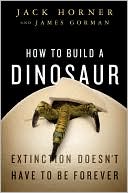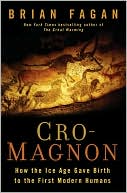Systematics And The Fossil Rec
This new text sets out to establish the key role played by systematics in deciphering patterns of evolution from the fossil record. It begins by considering the nature of the species in the fossil record and then outlines recent advances in the methodology used to establish phylogenetics relationships, stressing why fossil evidence can be crucial. The way species are grouped into higher taxa, and how this affects their utility in evolutionary studies is also discussed. Because the fossil...
Search in google:
This new text sets out to establish the key role played by systematics in deciphering patterns of evolution from the fossil record. It begins by considering the nature of the species in the fossil record and then outlines recent advances in the methodology used to establish phylogenetics relationships, stressing why fossil evidence can be crucial. The way species are grouped into higher taxa, and how this affects their utility in evolutionary studies is also discussed. Because the fossil record abounds with sampling and preservational biases, the book emphasizes that observed patterns can rarely be taken at face value. It is argued that evolutionary trees, constructed from combining phylogenetic and biostratigraphic data, provide the best approach for investigating patterns of evolution through geologic time. The only integrated text covering the study of evolutionary patterns from a phylogenetic stance. Booknews Explains why the study of evolutionary patterns and processes must begin from a taxonomic foundation. Analyzes modern approaches to both systematics and biostratigraphy, demonstrating how they can be combined to generate evolutionary trees. Covers species concepts, constructing cladograms, and finding patterns in the fossil record. For students and practicing paleontologists. Annotation c. Book News, Inc., Portland, OR (booknews.com)
Preface1Introduction1Methods for reconstructing evolutionary patterns1Palaeontological data and evolutionary trees4Species, taxa, and macroevolution52Species in the fossil record7Species concepts7Species in palaeontology16Are species different from other taxa?18How phena are recognized20Examples in practice223Parsimony, phylogenetic analysis, and fossils31The cladistic revolution31Characters in phylogenetic analyses33Cladograms and their construction45Fossils and phylogenetic reconstruction594Higher taxa73Why higher taxa are needed in evolutionary studies73The construction of higher taxa74Higher taxa and evolutionary patterns80Classification and rank91Macroevolution and emergent characters of higher taxa985The nature of biostratigraphic data107Biases affecting taxonomic ranges108Estimating absolute taxonomic ranges117Taxonomic ranges: do they provide a test of phylogenetic hypotheses?1226The construction of evolutionary trees125Trees, cladograms, and ancestors125How phylogenetic trees are constructed128Examples of phylogenetic tree construction in practice1417Patterns from the fossil record154Why phylogenetic data are essential154Biodiversity158Morphological disparity167Origination patterns174Extinction patterns177Taxonomic duration180Rates of evolution187Fossils and biogeographic patterns193References198Index219
\ From the Publisher"From a review of the manuscript: "[The book] has the potential to become the standard reference on the subject - required reading for all palaentologists. Indeed I can envisage a state of affairs where no-one will dare use taxonomic data from the fossil record to address evolutionary questions without first checking Smith to ensure that their methods are legal". D E G Briggs, University of Bristol \ \








